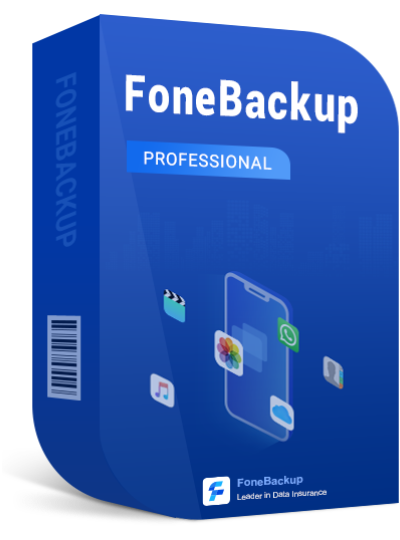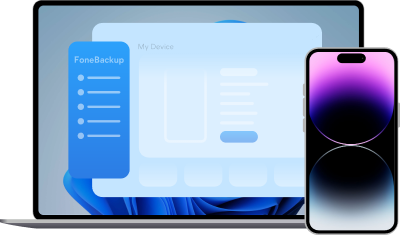How to Transfer Photos from iPhone to Computer with USB
How to transfer photos from iPhone to computer with USB cable? This post will show you 3 common methods of importing iPhone pictures to computer easily.
When you need to transfer your iPhone photos to your computer to free up more iPhone storage space, edit or just view them on a bigger screen, what can you do to easily make it? That's why this post exists. Just keep on reading and according to your needs to get the most suitable way!
- For Windows users, you can go to Method 1 (Recommended), Method 2 or Method 3.
- For Mac users, you can go to Method 4 or Method 5 (Recommended).
Of course not! All you need is a Lightning-to-USB cable you use for charging your iOS device.
1. How to transfer photos from iPhone to computer with USB - Easiest & Free
The best way to transfer iPhone photos to PC with cable is using the professional transfer software - AOMEI FoneBackup, It was developed by a team of professionals with 14 years of experience to help you safely accomplish the task!

- Move unlimited photos/videos between iPhone and PC.
- Easily transfer 1000 + photos within 10 minutes without losing quality.
- Preview and select photos/videos you need to import to PC.
- Various file formats can be recognized, like jpg, gif, heic, raw, etc.
- Support various iOS devices and versions, like iPhone 16/iPad/iOS 18.
Now just download and install the best software to import iPhone photos to PC.
Step 1. Connect iPhone or iPad to your computer
Run AOMEI FoneBackup on your computer, and connect the iPhone to the Windows PC with a USB cable.
Step 2. Go to iPhone to PC transfer
Click Phone Transfer > Choose iPhone to PC and click Get Started.
Step 3. Pick the items you want to import and select
Click the + icon to preview photos or videos you need. Select the specific files you wish to transfer and click OK to continue.
Step 4. Transfer photos from iPhone to laptop/desktop with USB
Choose a destination from the Transfer Settings option to save photos, then click the Start Transfer button to begin the task.
That's AOMEI FoneBackup! You can easily transfer photos from iPhone to flash drive, USB drives, memory sticks, etc. by changing the storage location.
Now you can know how to transfer photos from iPhone to PC Windows 11/10/8/7 with the professional AOMEI FoneBackup. If you don't want to use third-party software, you can choose other ways mentioned below.
2. How to transfer photos from iPhone to laptop/desktop with USB - Windows Explorer
Using an iPhone USB cable to transfer photos to PC, Windows Explorer or File Explorer is another common way.
Step 1. Connect your iPhone to the Windows PC and unlock it > Click Trust to allow your computer to access your photos.
Step 2. Go to Computer or This PC > you will see a new device named xxx iPhone.
Step 3. Double-click the iPhone > Open Internal Storage > Go to the DCIM folder > Preview your photos here and transfer specific photos from iPhone to computer via Copy and Paste.
3. How to transfer photos from iPhone to Windows 11/10/8 - Photos app
For Windows 8 and later users, the Photos app on your computer is also available.
Step 1. Connect your iPhone to a PC with a reliable USB cable. Turn on your iPhone and unlock it.
Step 2. Click the Start button from your PC > Select Photos to open the Photos app.
Step 3. Choose Import > From a USB device, then follow the on-screen instructions. You can choose the files you want to add and select where to save them.
When you are unable to import photos from iPhone to PC, that may be because there are no photos to import, the iPhone's DICM folder is empty or something went wrong. You can try it again or use the free alternative to fix the issue.
4. How to put pictures from iPhone to computer with USB - iTunes
For macOS Mojave and earlier or Windows users, you can also use iTunes to get photos from iPhone to computer.
Step 1. Launch iTunes first, and if a prompt to Trust this Computer pops up, click Trust to access the iPhone photos.
Step 2. Click Photos on the left side of the iTunes Windows.
Step 3. Tick Sync Photos, and choose an album or folder from the pop-up menu.
Step 4. Click Apply to start importing photos from iPhone to your computer.
5. How to transfer photos from iPhone to Mac computer with USB
For Mac users, you can also import photos and videos to your Mac by connecting your device to your computer.
Step 1. Connect your iPhone or iPad to your Mac computer with a USB cable > Launch the Photos app on your Mac.
Step 2. Now you can see an Import screen with all the photos and videos that are on your connected device. If it doesn't automatically appear, click the device's name in the Photos sidebar.
Step 3. If asked, unlock your iPhone or iPad. You need to tap Trust on your device to continue when you see a prompt.
Step 4. Select where you want to put your pics. Next to Import to, you can choose an existing album or create a new one > Choose the photos you want to import and click Import Selected, or click Import All New Photos to finish the process.
FAQs on how to import photos from iPhone to computer
-
How to transfer photos from iPhone to computer without USB?
If you need a wireless way to upload photos from iPhone to computer, you can use iCloud or Bluetooth. You can get more details in this how to transfer photos from iPhone to PC wirelessly guide. Before the process, you need to know that iCloud only offers 5 GB of free storage.
-
Can I transfer iPhone photos directly to USB?
Of course! You can easily transfer photos from iPhone to memory stick without a computer with a Lightning to USB adapter.
Conclusion
That’s all about how to transfer photos from iPhone to computer with USB cable. Here are 5 commonly used methods to make it.
- For Windows users, you can use AOMEI FoneBackup, File Explorer, Windows Photos app or iTunes.
- For Mac users, you can use iTunes or Mac Photos app.
Because of the system restrictions, using a cable to transfer photos from iPhone to PC might be more difficult than Mac. In this situation, AOMEI FoneBackup will be the fastest way and can accomplish the task without losing quality.

